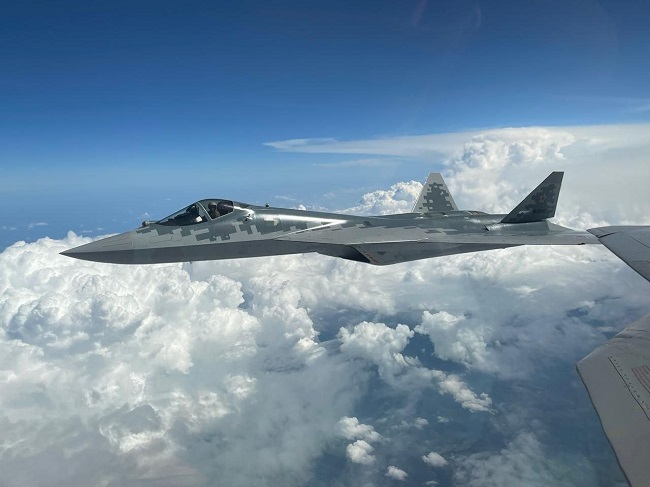
The Su-57 is said to be the most advanced fighter jet in the Russian Air Force. Back in the fall of '22, the Author had already reported on its use in combat in the early months of Ukrainian operations (spring 2022, with FELONs used to strike targets in stand-off mode), an assessment confirmed in 2023 by the British MoD, which set the date of deployment as “at least June 22.”
Yet, despite three and a half years of war, confirmed sightings of the aircraft remain extremely rare (2-3 cases, the last of which dates back to February 2024, during a missile attack in the Luhansk Oblast). The reason for this is basically Russia's decision to use the aircraft sparingly, both because of the still low number of operational aircraft available—other than prototypes or pre-production aircraft—and because of fears that poor performance could undermine its appeal on the export market (currently limited to a single customer – Algeria – which is unlikely to take delivery of a FELON before 3-4 years), not to mention the fear of possible damage or shoot-downs with the associated loss of sensitive technology. A Su-57 shot down in Ukraine would not only represent a material loss, but also a severe blow to export prospects and the credibility of Russian stealth technology.
Moreover, only in the last 5-6 weeks have the first four Su-57s entered service with a front-line operational unit, presumably the 23rd Regiment based in Dzyomgi (Khabarovsk Territory, Russian Far East). Currently, 28-30 units are expected to have been delivered, of which two-thirds are prototypes/pre-production aircraft, all still without the new AL-51F1 Izdeliye-30 engine with dual-axis thrust vectoring and equipped with the old and underpowered Saturn AL-41F1 Izdeliye -117 engine, derived from the engine used on the Su-35, which has always been considered a stopgap solution pending the development of the new AL-51.
Further complicating the deployment rate, classified documents have recently emerged confirming that the Su-57 FELONs were delivered to the Russian Air Force in a downgraded and incomplete version. Specifically, the documents examined by Frontelligence Insight indicate that the aircraft were not only delivered without the 101KS-N electro-optical targeting pod, which provides all-weather surveillance and passive infrared detection capabilities, and certain critical radar capabilities – AESA antenna reception modules and an adequate cooling system – but also supplied at a much higher price than initially planned. The above data shows that the Russian Ministry of Defense paid 3.07 billion rubles (approximately 32.7 million euros) for each Su-57 purchased, which is certainly not a prohibitive price for a so-called “5th generation” fighter, but enormous for a Russian-made aircraft.








.png)
